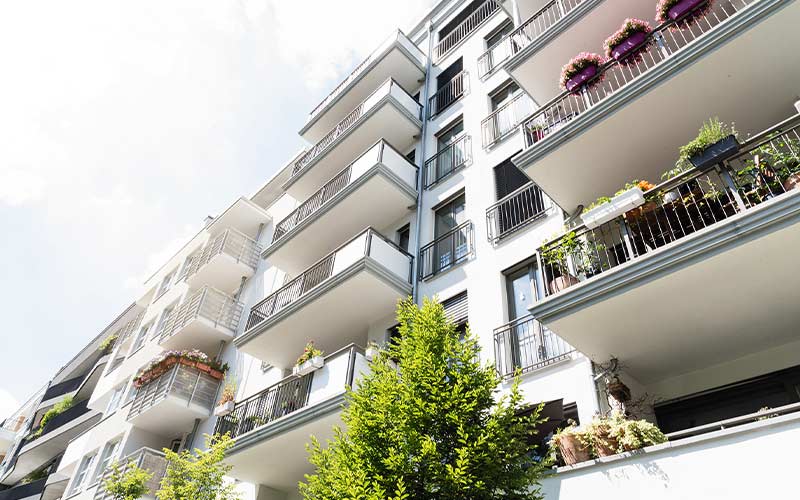
As the 2025 deadline for SB326 compliance approaches, many HOA boards and property managers are asking: What happens if SB326 inspections aren’t completed on time?
The risks of non-compliance are real, and they extend far beyond simple fines. From legal liability to increased repair costs, non-compliance with SB326 can have long-term consequences for property values, resident safety, and financial stability. Whether planning an SB326 report generation service or coordinating inspections alongside an SB721 report generation service, understanding these risks is critical to taking proactive action.
Understanding SB326 Compliance Requirements
SB326, also known as the “Balcony Inspection Law,” was enacted to ensure that Exterior Elevated Elements (EEEs) like balconies, decks, and stairways in condominium associations are structurally sound and safe.
Key requirements include:
- Completing the first inspection by January 1, 2025
- Conducting inspections every nine years thereafter
- Inspecting at least a statistically significant sample of EEEs
- Repairing or replacing unsafe elements promptly
- Maintaining detailed inspection records
Failure to comply not only violates the law but also exposes property owners to a variety of risks.
Major Risks of SB326 Non-Compliance
1. Resident Safety Hazards
At the heart of SB326 is resident safety. Non-compliance increases the risk of accidents due to:
- Structural failures
- Hidden deterioration from water intrusion
- Undetected dry rot or corrosion
Balcony collapses or other structural failures could result in injuries or even fatalities. Beyond the human toll, such incidents bring intense public scrutiny and long-term reputational damage to the community.
2. Legal Liability and Lawsuits
If a preventable injury or fatality occurs because of neglected balcony maintenance, property owners and HOAs can face significant legal consequences, including:
- Personal injury lawsuits
- Wrongful death claims
- Breach of fiduciary duty claims against HOA boards
California courts have consistently held property owners accountable for maintaining safe common areas. Proper use of an SB326 report generation service can provide documented proof of compliance and proactive maintenance, reducing legal risks.
3. Insurance Complications
Insurance carriers may deny coverage or increase premiums for properties that fail to meet SB326 inspection requirements. In cases where coverage is denied, the HOA or property owner must bear the full cost of any claims or repairs.
Some insurers may even cancel policies entirely if they determine that an association poses an uninsurable risk due to non-compliance.
4. Regulatory Penalties
While SB326 does not outline specific fines for non-compliance at the state level, many local building departments have the authority to impose penalties for failing to maintain safe structures.
Future updates to California’s building codes may also introduce stricter penalties for non-compliance, similar to how cities handle SB721 enforcement for rental properties. An experienced SB721 report generation service provider often monitors regulatory changes closely to avoid surprises.
5. Increased Repair Costs
The longer structural damage goes undetected, the more expensive it becomes to fix. What might have been a minor balcony repair caught early through inspection could turn into a complete reconstruction project if left unchecked.
In addition, emergency repairs are often more costly than planned maintenance because of rush scheduling, expedited materials, and temporary safety measures.
6. Decreased Property Values
Buyers and real estate agents are increasingly aware of SB326 compliance requirements. Properties that lack current inspection records may:
- Struggle to sell
- Experience lower offers
- Attract fewer buyers due to perceived risks
HOAs that complete timely inspections and maintain clear records through a professional SB326 report generation service demonstrate responsible management, helping preserve property values.
7. Strained Community Relations
In a condominium association, failure to address SB326 requirements can lead to:
- Resident frustration over safety concerns
- Board member turnover due to legal pressure
- Special assessments to cover emergency repairs
Transparent, proactive compliance fosters trust between boards and residents, strengthening community engagement and stability.
How to Avoid the Risks of SB326 Non-Compliance
1. Schedule Inspections Early
With limited numbers of qualified inspectors and looming deadlines, early scheduling is essential. Waiting until the last minute may result in:
- Higher inspection costs
- Limited availability of experienced providers
- Risk of missing the compliance deadline
2. Partner with Professional Inspection Services
Choose a provider that specializes in SB326 report generation service and has experience with related compliance work like SB721 report generation service for apartment properties.
Professional services ensure:
- Complete element inventories
- Thorough visual and minimally invasive inspections
- Properly certified reports
3. Budget for Repairs
Inspection findings may require repairs. Associations should proactively budget for potential repair costs based on building age, materials, and previous maintenance history.
4. Maintain Organized Records
Keep copies of inspection reports, repair invoices, and communication records. Organized documentation proves compliance and can help resolve disputes or regulatory inquiries quickly.
5. Communicate Transparently with Residents
Keep homeowners informed about inspection plans, timelines, and repair schedules. Transparent communication prevents misunderstandings and promotes resident support.
Real-World Example: A Lesson in Proactive Compliance
A mid-sized condominium complex in Northern California faced structural concerns due to visible water damage on several balconies. By conducting inspections well ahead of the SB326 deadline using a trusted SB326 report generation service, the HOA discovered early-stage damage.
Because the issues were caught early, repairs were scheduled during the offseason at lower contractor rates. The project was completed without needing special assessments, and property values increased thanks to the demonstrated commitment to safety.
Final Thoughts
The risks of SB326 non-compliance are too significant to ignore. Beyond financial penalties, property owners and HOAs risk resident safety, legal liability, insurance issues, and damaged reputations.
By partnering with a reliable SB326 report generation service and staying informed about compliance timelines, communities can protect both people and property investments. Services that also handle SB721 report generation service needs offer additional convenience for mixed-ownership or rental properties.
If any questions arise about SB326 compliance, inspection scheduling, or how to prepare for balcony inspections, feel free to leave a comment below. A response will be provided as soon as possible to assist with ensuring full compliance and peace of mind.
